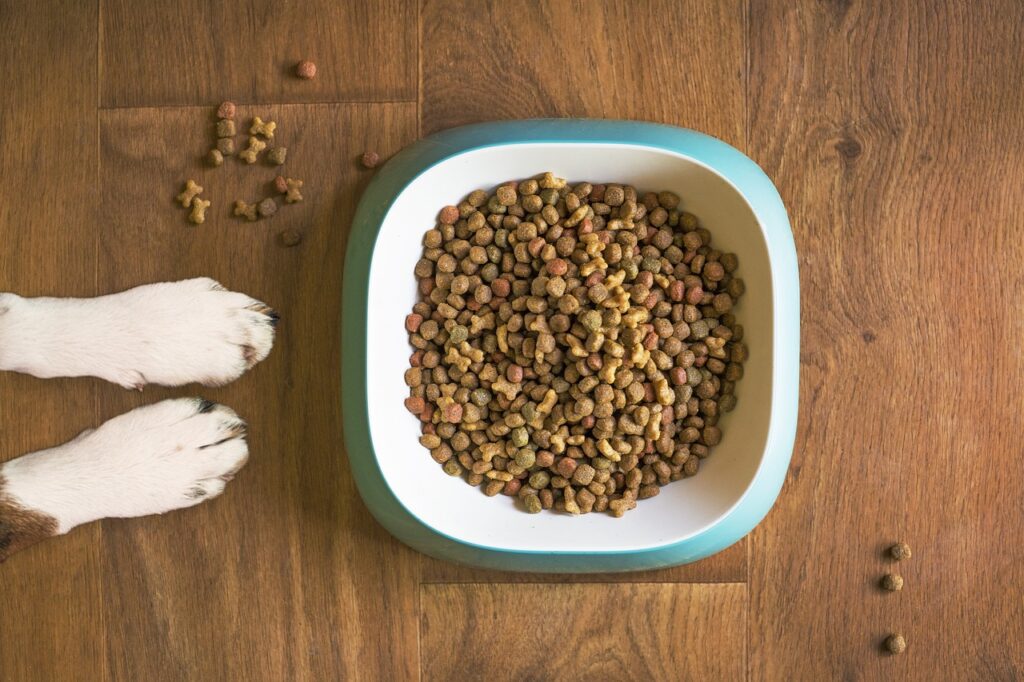Earlier in the mid-1800s, pets used to live outside and eat table scraps or raw meat. It was 1860 when the world’s first fresh pet food was developed by an electrician named James Spratt. It was made with wheat, vegetables, beetroot, and parts of prairie beef. By 1900, canned pet food had come into existence, made with horse meat and marked its presence by 1941 but due to the ongoing World War II it had lost its presence.
In 1956, the first dry kibble was produced through a process called extrusion and gained momentum throughout 2000. Over the last two decades, consumers have been self-educating on healthy foods for themselves, their families, and also for their pets, which is a key driver in the fresh pet food industry. People shifted towards fresh pet food as it resembles chunky varieties of canned food, unlike traditional kibble pet food.
What is Fresh Pet Food?
Fresh pet food is made for domesticated animals and is composed according to their nutritional needs. It consists of meat byproducts, cereals, meat, vitamins, grains, and minerals. These foods are kept in the fridge, to maintain freshness between servings and have fewer or no preservatives
The primary ingredients present in fresh pet food are poultry, byproducts of meat, feed grains, seafood, and soybean meal. The animal parts utilized in the manufacturing of fresh pet food include bones, cheek meat, kidneys, spleen, lungs, stomach tissue, liver, and damaged carcass parts.
The major difference between fresh pet food and traditional pet food is the amount of moisture. Fresh pet food contains moisture of around 70%, as these are generally made from fresh meat products and fresh grains and vegetables, while traditional pet food contains no moisture of more than 10%. Traditional pet foods require more amylaceous, or starch, ingredients compared to fresh pet foods.
What are the Types of Fresh Pet Foods?
Fresh pet food is categorized into raw food, frozen food, grain-free, and pate. We will further discuss all the above types in detail.
- Raw Fresh Pet Food: Raw fresh pet foods contain protein from an animal, like beef and chicken, and have not been heated or cooked to a high enough temperature to kill germs.
- Frozen Fresh Pet Food: Frozen fresh pet foods are typically minimally processed with little to no heat, which provides high nutritional value. The freezing process also helps to reduce the likelihood of bacterial contamination in fresh pet food.
- Grain-free Fresh Pet Food: Grain-free foods do not contain any grains such as corn, wheat, rice, or oats which are common ingredients used in pet foods. Grain-free pet food contains alternative sources of carbs like potatoes and pea flour to offer carb-rich food to pets.
- Pate Fresh Pet Food: Pate fresh pet food is finely minced chicken cooked in chicken broth with potatoes, carrots, and peas. It is a complete and balanced diet for pets ensuring consistency, quality, and superior taste.
Why There is A Need for Fresh Pet Food
Pets need the best diet to live a long and happy life, as extensive research and veterinary science have shown that a pet’s health begins in the gut. Fresh food promotes changes in pets’ skin’s bacterial composition and increases their microbiome diversity, as skin is the body’s first barrier to protect itself from the environment and potential hazards.
Here are some reasons why there is a need for fresh pet food,
- Fresh Food Helps in Maintaining a Healthy Weight for Pets: Fresh food provides a balanced diet to pets as it includes high-quality and nutritious ingredients, such as carrots, peas, sweet potatoes, spinach, brown rice, chicken, lamb, turkey, kale, organ meat, mushrooms, and green beans. These ingredients offer several health benefits and promote adequate caloric intake to prevent obesity in pets.
- Fresh Food Enhances Pets Coat and Makes It Shiny: Pets suffer from itching, scabs, and rashes due to skin health problems that are caused by a nutrient deficiency. Fresh pet foods provide macronutrients and micronutrients to pets, including protein, vitamins, carbohydrates, and minerals, which increase the skin microbiome in pets and make their skin shiny.
Conclusion
Fresh pet food offers quality food, which delivers all the important aspects of a balanced diet: sustainability, digestibility, safety, nutrition, palatability, value, and convenience. It also offers variety while maintaining consistent quality, which makes it an ideal food option for pets. Pet owners are shifting to fresh pet food due to increasing education and awareness of healthy foods.



